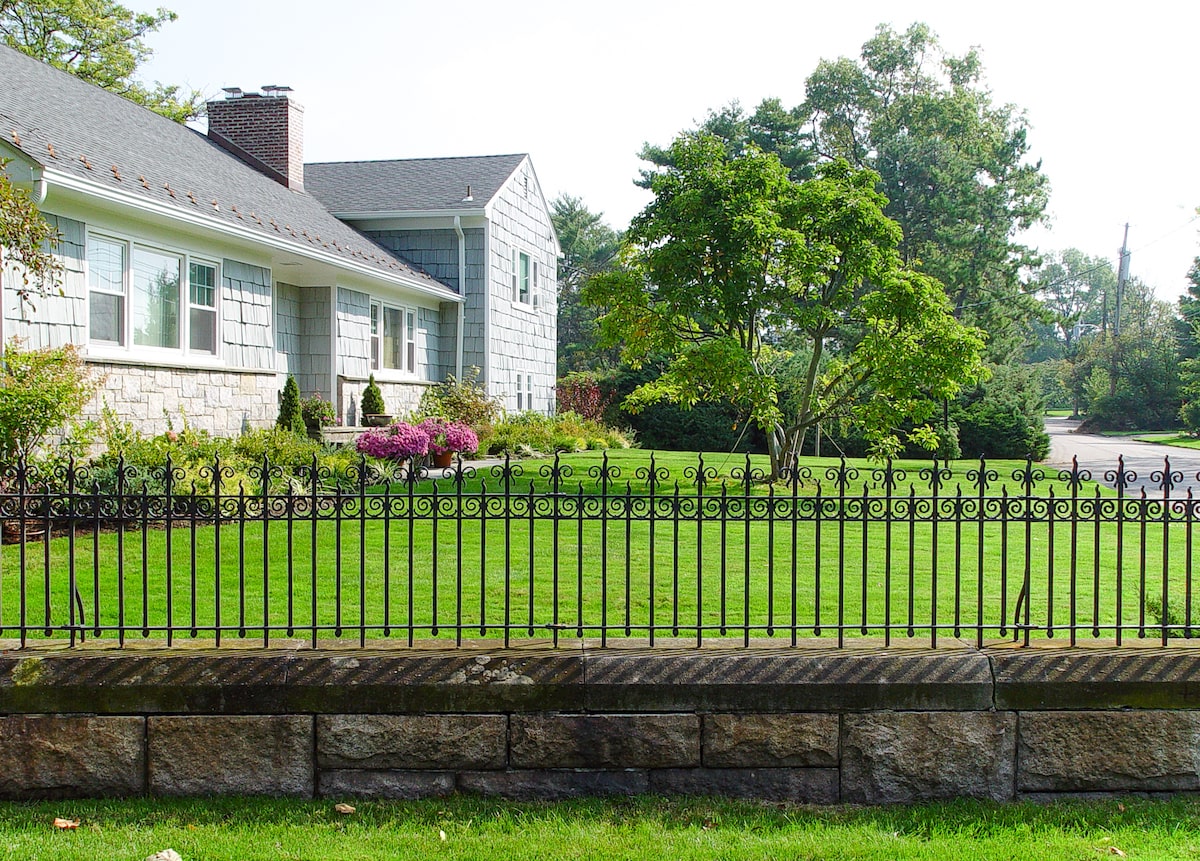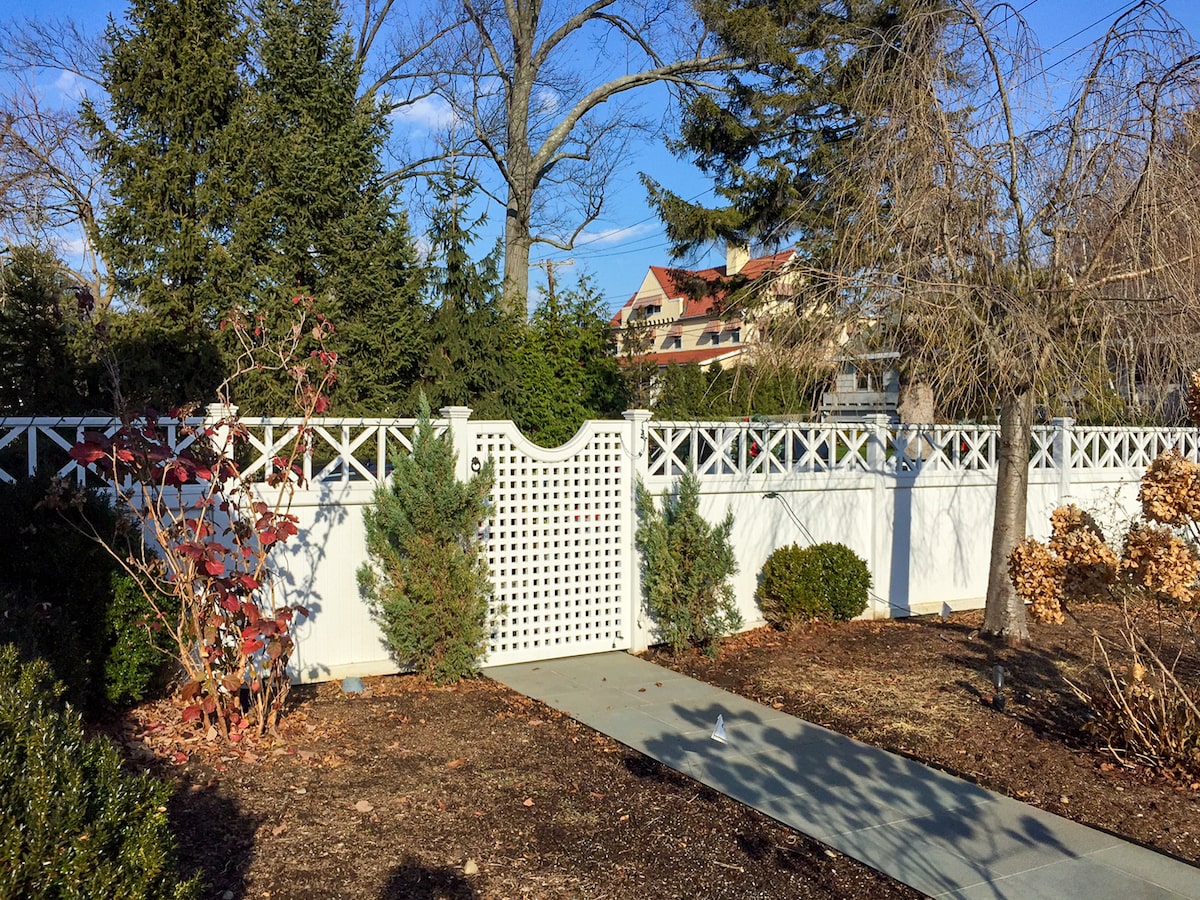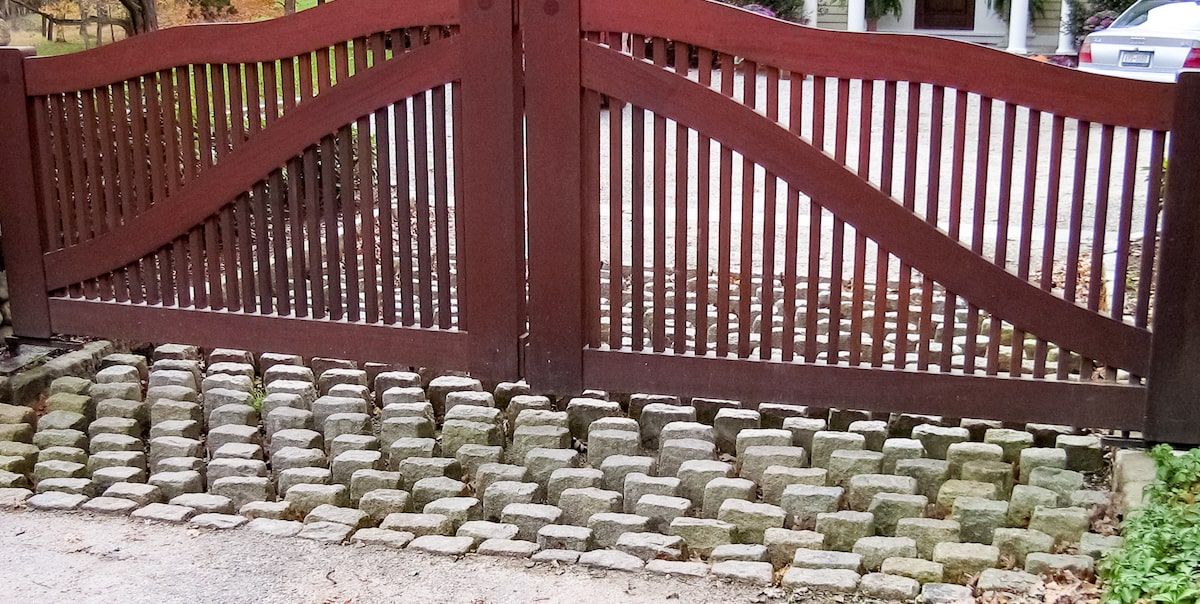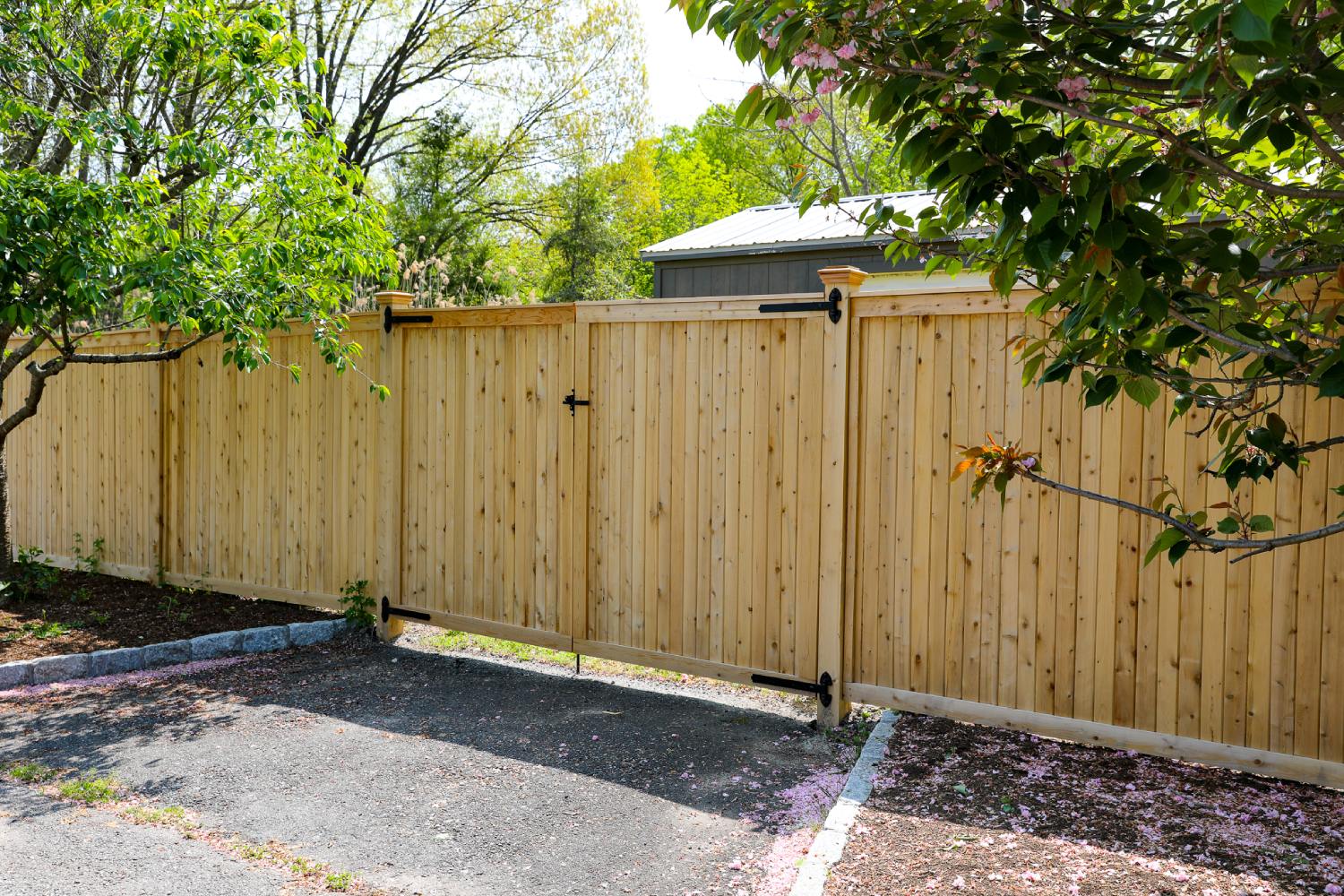When it comes to choosing the perfect fencing for your property, there are a lot of materials to choose from and a lot of options to weigh. How much privacy do you want? What aesthetic are you going for? What sort of fence will simultaneously protect your property while enhancing the landscape and highlighting its beauty?
But one of the most fundamental questions is: what material will your fence be made of?
If you’re looking into getting a metal fence, you might find yourself wondering for the first time: what’s the difference between cast iron and wrought iron? Both materials have unique strengths, characteristics, and historical significance that will affect the choice you make for your property.
In this comprehensive guide, we’ll look at what makes these two materials unique and how to choose between them. From durability and design flexibility to maintenance and cost, we’ll provide you with all the information you need to make an informed decision for your fencing project.
What’s the Difference Between Cast Iron vs. Wrought Iron?
There are differences in their chemical composition, but the primary difference between cast iron and wrought iron is in how they’re produced: cast iron is iron that’s been melted, poured into a mold (i.e. a “cast”), and allowed to solidify into its current shape. Wrought iron, on the other hand, is iron that’s been heated and hammered with tools (i.e. “wrought,” the archaic past tense of “work”) to form it into a precise shape.
These differing methods result in materials that, while they’re both iron, have significant differences in cost, strength, hardness, malleability, and chemical composition.
What Is Cast Iron?
Despite their names, both cast iron and wrought iron are actually alloys, meaning they contain certain amounts of other materials in addition to iron. Cast iron is usually 2 to 4% carbon and contains small amounts of silicon, manganese and occasionally sulfur and phosphorus. Cast iron is made either by smelting iron ore or pig iron (an intermediate iron ore product) then mixing it with carbon and other metal alloys.
The melted material is then poured into a mold (i.e. a “cast”) with a predetermined shape and allowed to cool. Cast iron structures can be as simple or intricate as the mold they were poured into, and the fact that the iron solidified all in one continuous piece helps make these structures extremely sturdy.
Think of the cast iron frying pan you probably have in your kitchen. Unlike a stainless steel saute pan which likely has a handle made of a separate piece that had to be attached to the main body of the pan, your cast iron is all one continuous piece that was formed together in a mold.
What Is Wrought Iron?
Wrought iron has a much lower carbon content (usually less than .08%), but it contains small amounts (1 to 2%) of slag, the byproduct of iron ore smelting consisting of silicon, sulfur, phosphorus, and aluminum oxides). The lower mixture of carbon makes the metal more malleable and ductile. As the material is heated, reheated, and hammered into shape the slag is worked out of the iron and the material grows progressively stronger and more fibrous in composition. Wrought iron will often undergo at least about a half dozen cycles of heating and working.
The term “wrought iron” often gets misused today to refer to any metalwork – often mild steel or cast iron – that’s designed to have the precise, intricate appearance of the classical wrought iron designs from the nineteenth century. However, to truly be wrought iron, the metal has to have been forged, heated, and hammered by a trained blacksmith, a process that’s become much rarer today than it was in the past. The hand craftsmanship that goes into its design and construction makes wrought iron a truly unique and special material today.
How are Cast Iron vs. Wrought Iron Fences Different?
Cast iron fencing is typically chosen for its ornate and precise designs, made possible by the casting process which allows intricate patterns and shapes. This type of fencing is quite strong and can withstand significant wear. However, cast iron is technically more brittle than wrought iron: meaning it’s more likely to crack or break rather than bend if subjected to high impact or pressure.
On the other hand, wrought iron fencing is celebrated for its timeless aesthetic and artisanal qualities. The hand-forged nature of wrought iron permits a wide range of output: everything from simple designs to highly intricate workmanship that can be more detailed than most cast iron. The forging process also imparts wrought iron fences with a higher resistance to impact and bending, making them more durable in certain environments.
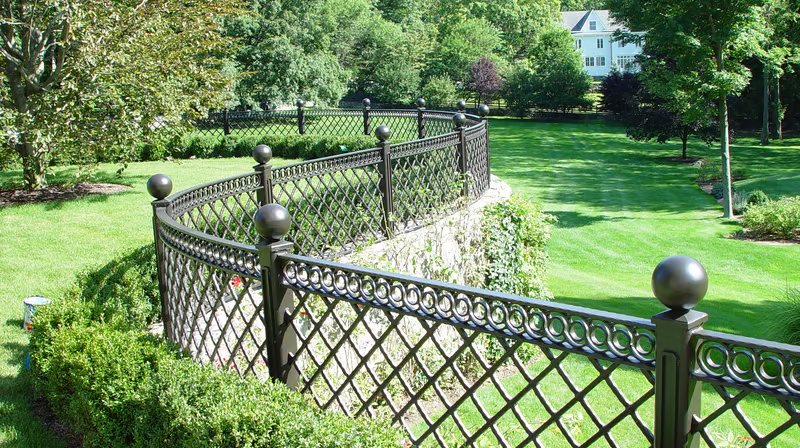
Durability and Longevity: Cast Iron vs. Wrought Iron
Wrought iron is generally longer-lasting than cast iron. As we said, cast iron is harder but it’s also more brittle. The extra carbon in its molecular structure compared with wrought iron results in internal stress points that are more likely to fracture under extreme stress rather than bend. There are advantages and disadvantages to this: cast iron is more likely to retain its exact shape without undergoing any warping or bending.
Wrought iron, on the other hand, has more of a fibrous internal structure with grains running through it almost more like wood as a consequence of the extensive heating, hammering, and layering process that it undergoes. (And the higher the quality of the wrought iron, the more extensive this process will be.) That means that the final product is extremely strong and less likely to break under force rather than bend. This makes cast iron the better choice for holding up against constant pressure.
Aesthetic Differences Between Cast and Wrought Iron Fencing
While cast iron can be used to duplicate specific patterns and historical designs very precisely on a larger scale (specifically designs with a great degree of ornate detail), wrought iron is generally more highly sought after for its one-of-a-kind bespoke craftsmanship. Wrought iron is ideal for a statement piece: each work is hand-forged by trained artisans and the resulting product can be shaped and formed to your exact specifications in ways that make them truly stand out from less custom-fabricated materials.
Maintenance Requirements for Cast Iron vs. Wrought Iron Fencing
Both cast iron and wrought iron are susceptible to corrosion over time when their bare surfaces are exposed to the elements. That’s why both materials will require finishing and regular maintenance. However, cast iron generally rusts more slowly than wrought iron and thus can go longer intervals between upkeep.
Both paint and powder coatings are common solutions, though powder coatings can’t be touched up on site when they chip, which makes them less practical for long term maintenance. At Garon Fence and Bedford Ironworks, we typically hot dip galvanize our wrought iron, which adds a zinc coating to the metal, protecting it from oxidation. We then prime and paint over it for finishing.
Both cast and wrought iron are some of the most durable materials out there. With proper care, iron fences can last for generations.
Is Wrought Iron Or Cast Iron More Expensive?
Wrought iron is generally more expensive than cast iron, primarily due to the labor-intensive process of making it. Each piece is usually custom-made and requires a high level of skill and attention from trained blacksmiths: the more intricate the design, the more significant the time and labor costs that accompany it.
Cast iron, however, is generally more cost efficient and less labor intensive than wrought iron because it doesn’t need to be worked by hand. Since the iron is shaped by pouring it into molds, cast iron is often used to create very intricate designs or to recreate historical or period-specific patterns very precisely.
However, the exact cost of the fencing will depend on a number of factors, including design complexity, size, and the specific needs of the installation site.
When we’re designing a custom iron fence or railing, we offer customers the option to add decorative elements made from cast iron to an otherwise wrought iron structure. Those pieces are then welded onto the pickets of the railing. This process can save on costs, since producing intricate decorative designs in wrought iron through hand forging can get expensive.
Environmental Impact and Sustainability Factors
One of the best decisions you can make for the environment is investing in high quality materials that last a long time. By this standard, both cast iron and wrought iron are good choices for the environment because they can last for generations.
However, the specific environmental impact of each type of iron comes down to differences in processing. Cast iron, made from melting down scrap iron and other alloys, does make use of recycled materials. However, the energy-intensive process of melting and casting iron can have a significant carbon footprint. Cast iron is also more likely to need replacement if damaged, potentially resulting in more frequent material use over time.
Wrought iron, known for its durability and longevity, could be viewed as more sustainable because it often outlasts other fencing materials. The ability to repair and repurpose wrought iron also contributes to its sustainability. The process of forging wrought iron is also less energy-intensive compared to casting.
Both types of iron are highly recyclable, which adds to their sustainability. At the end of their life cycle, iron fences can be melted down and reused, reducing the need for new raw materials and minimizing waste.
Security and Strength: Which Iron Fence Offers More?
As mentioned above, wrought iron is the stronger, more durable material because the hand-forging process develops a tough, almost wood-like grain in the iron which allows it to withstand significant pressure.
The strength of a fence or railing will also be greatly influenced by the thickness of the iron and by whether the manufacturer uses solid or hollow components since hollow components are lighter weight and more susceptible to rust and corrosion. At Garon Fence and Bedford Ironworks, we use solid posts for fences and railings and ⅝” solid square vertical pickets. These make our structures very strong: take a trip to our showroom and you’ll be surprised how difficult these components can be to lift because of the sheer mass of metal in their sturdy construction.
Preparing for Iron Fence Installation
At Garon Fence and Bedford Ironworks, we typically use one-inch square posts core drilled and set in hydraulic cement when we’re installing railings. For fencing, we use heavy duty steel posts that we galvanize, prime, and paint, set into concrete footings. The environment of your property may influence preparations as well: for instance, galvanizing is particularly important if the structure is near water.
Custom Iron Fencing to Elevate Your Landscaping
For over 40 years, Garon Fence and Bedford Ironworks has been providing homeowners, architects, and designers with expertly crafted, hand-made metalwork produced by skilled artisans and blacksmiths. Our commitment to quality materials and superlative standards of production guarantee that you’ll receive finished products of exceptional craftsmanship.
Contact us to get a free estimate for your project, or visit our factory showroom in Bedford Hills, New York to see what we’re all about.

